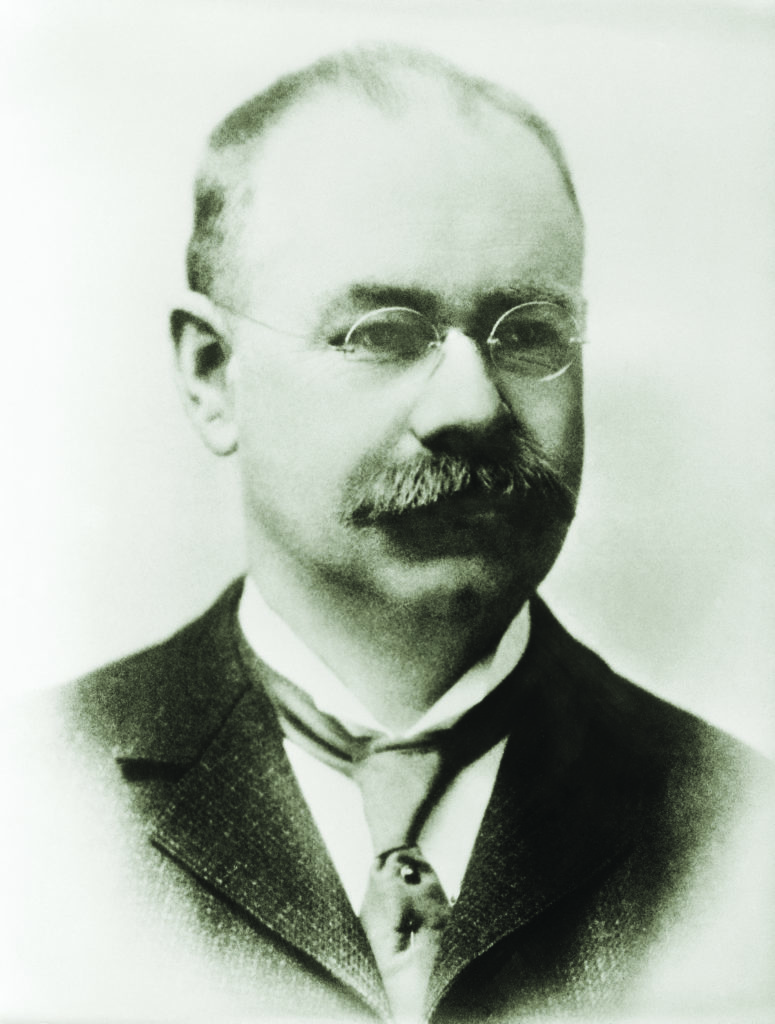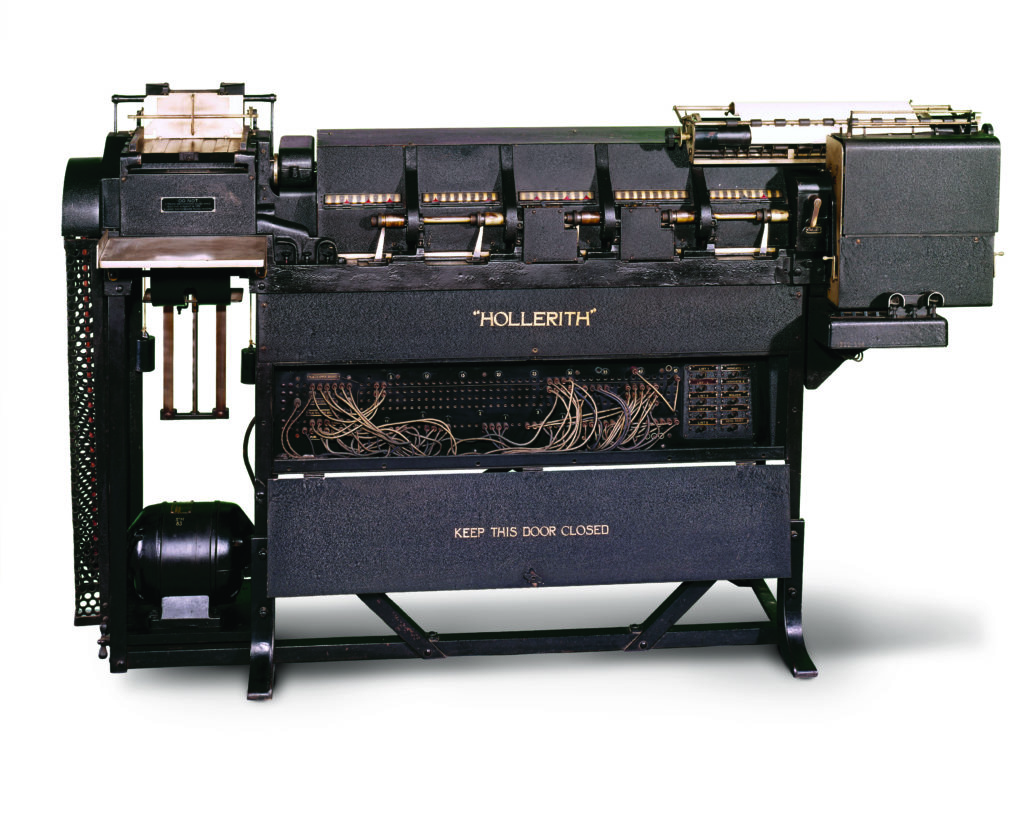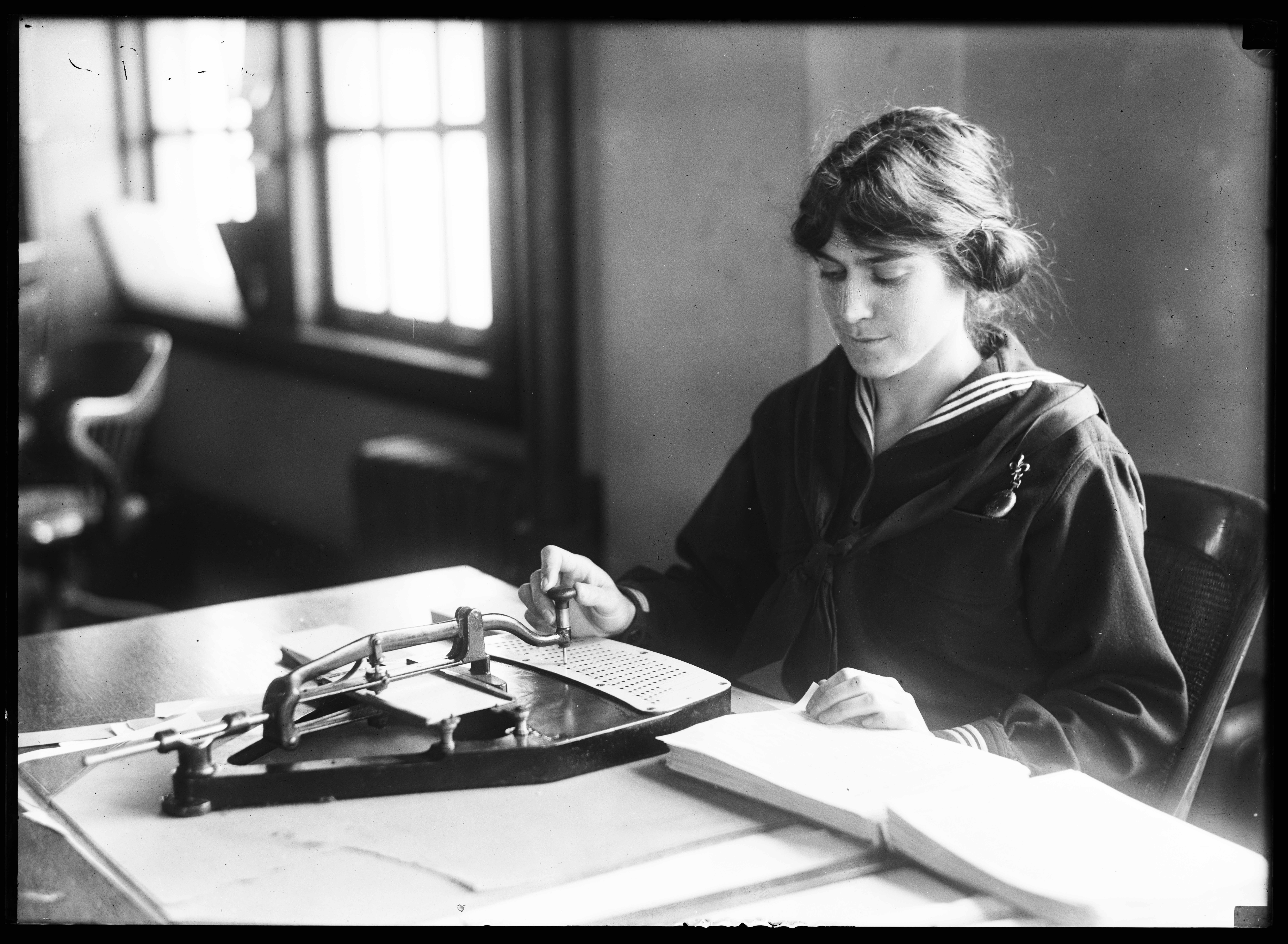Self-taught tinkerer used punch-card machine that created textile patterns to create an early computer
HERMAN HOLLERITH rewarded his employees with bonuses and generous advances, but woe betide any who stretched a bathroom break. The micromanaging Hollerith wired a workplace toilet seat to shock workers too long on the throne. The same controlling technocratic bent got Hollerith a place in history when he applied himself to mechanizing tabulation of the United States Census.
[divider_flat]To apportion congressional representation and taxes, the Constitution requires a census every 10 years. The first, by hand in 1790, took 18 months, tallied 3.9 million residents, and enlarged the House of Representatives from 65 to 105 members. By 1880, the job had ballooned, requiring seven years to record 50 million residents. Concern arose that the 1890 effort might drag on past 1900.
That was where Herman Hollerith came in. Untutored in statistics or electrical engineering, Hollerith had a talent for synthesizing ideas. His tinkering led to cards punched with holes whose position and order conveyed information. Fed into a corresponding machine, punch cards automatically could be “read” to arrive at tallies of data by category. His innovations in counting Americans catapulted the world into the information age.

Hollerith, a native of Buffalo, New York, was seven when his father, a teacher, died. The family moved to New York City. One daughter married a textile merchant whose business involved mechanical looms run on a system devised in 1801 by Joseph Marie Jacquard. On a Jacquard loom, cards punched with holes automatically directed threads to their locations in a piece of fabric. To repeat a design, a loom operator laced together punch cards in a given order.
Despite uneven grades—frustrated by his terrible spelling, he once jumped out of a second-story classroom window—young Hollerith had a gift for numbers. He was 19 and a recent graduate of the Columbia School of Mines in New York City when he hired on to collect data for the 1880 census. During that stint, he acquired a mentor in John Billings, who headed Vital Statistics at the Census Bureau and talked up the Jacquard loom as an information processing machine. Recalling his brother-in-law’s business, Hollerith understood what Billings meant. He saw a related example in railroad tickets, punched to personalize information on a given passenger and encoding departure and arrival times, routes, and destinations.
Borrowing brilliantly, Hollerith between 1884 and 1887 filed three patents. His design for a data management system incorporated the ideas behind the ticket punch and the loom card. However, his machine added a fillip: mechanical tabulation of information. Each hole in a Hollerith tabulator card denoted a specific datum—say, a person’s sex, age, race, or occupation. A corresponding electromechanical reader had an array of pins configured to pass through the card holes and enter a mercury bath, completing a circuit and advancing counters by category.
In 1887 Baltimore and in 1889 New York City successfully used his system to tally vital statistics, proving Hollerith’s concept. These projects presaged the outcome of a competition to mechanize the 1890 federal census. Using his tabulator to process data from the 1880 census of St. Louis, Missouri, Hollerith and his Tabulation Machine Company won hands down. His punch card technique captured the data in 72.5 hours; rivals needed 100.5 and 144.5 hours. Hollerith’s counters tabulated data into categories in 5.5 hours. The other systems took 44.5 and 55.5 hours. Hollerith landed the contract, which specified that he would lease the government more than 50 tabulating machines and fix any problems. The machines worked so well, and the data proved so reliable, that the 1890 Census of more than 62 million residents was done in 30 months.
The 1890 data showed the nation’s population in unprecedented detail. Early censuses had asked only six questions: number of white free men and white free women, gender, race, relationship to head of household, name of head of household, and number of slaves, each counted as 3/5 of a person in apportioning electors in the state Electoral College. By Hollerith’s time the quiz was collecting information not only on family size, but occupation, race, home ownership, English fluency, and immigration and naturalization status. Census takers asked how many children a woman had borne and how many had survived, whether men had served in the Union Army, and who in a household was a survivor of a Union casualty. The 1890 census put the population at 62,979,766, a 25 percent increase over 1880—by comparison, the 2010 Census came in at nine percent over the 2000 count.
Hollerith’s tabulator had an impact far beyond counting and categorizing people. In his patent application, he noted, “My invention is not limited to such a system [for the census] but may be applied in effecting compilations of any desired series or system of items representing characteristics of persons, subjects, or objects.” Obvious candidates were steel mills, railroads, insurers, and other large businesses—any entity grappling with a huge flow of numbers. By 1900, Hollerith had enhanced his automation. In that census his rig was processing as many as 2,000 items every 60 seconds. His tabulators were critical for burgeoning retailers like Chicago department store Marshall Field’s, where in 1902 management employed punch cards and a Hollerith tabulator to records sales by product class and item number, date, route, state, branch, and so on.

The Tabulating Machine Company’s smashing success brought tribulations. The firm easily won the contract to tabulate the 1900 census, but in anticipation of the 1910 exercise would-be competitors complained that Hollerith’s patent protections amounted to an illegal monopoly. Opposition by rival Simeon North, picked to run the 1910 census, boxed out Hollerith, compounding his frustration. North hoped to design tabulators based on Hollerith’s, leading to years of battle between Hollerith and the government over patent infringement. Eventually North was let go, but in parting comments gave Hollerith his due. “Men may come and men may go, but great scientific movements like this one for the standardization of official statistics depend upon no one man,” North said, speaking of Hollerith’s approach. “They are bound to advance for they are at the root of an advancing civilization.”
In 1911, Hollerith sold his stake in Tabulating Machine Company to Thomas Flint and retired to Virginia to raise swine, sheep, and finally cattle. He showered friends with foodstuffs, from canned goods to butter, codfish, and oysters. Flint expanded his new holding, renaming it Computing Tabulating and Recording Company. During World War the firm tracked distribution. Rebranded in 1924 as International Business Machines, the corporation dominated data processing for decades. Hollerith-style tabulators handled the United States Census until 1951, when UNIVAC 1 got the assignment. New sampling techniques reduced the burden of collecting information from residents. Processing surpassed 4,000 items a minute. Today’s technology can process a million items a minute.





